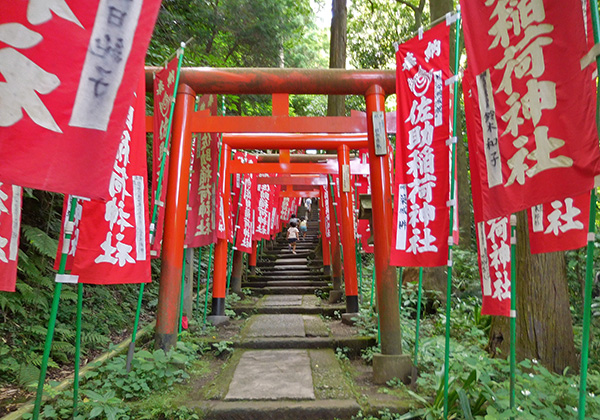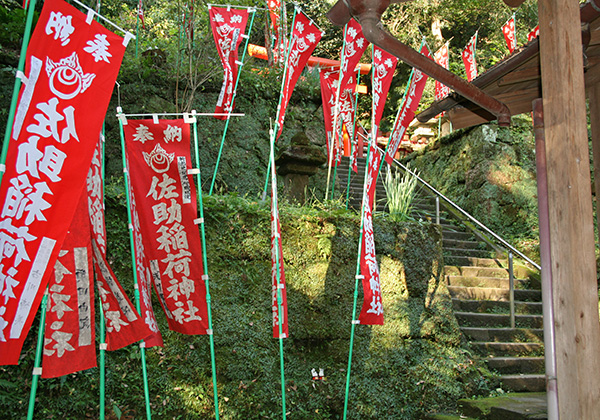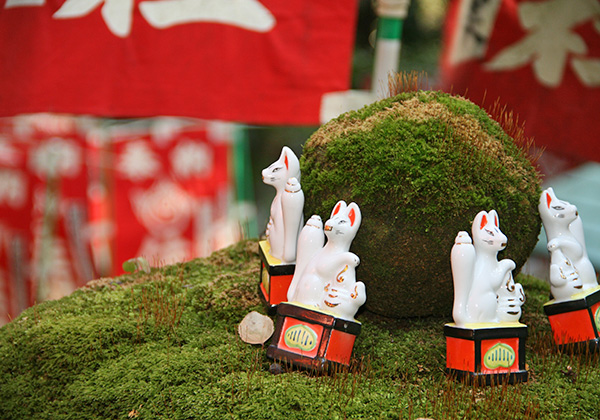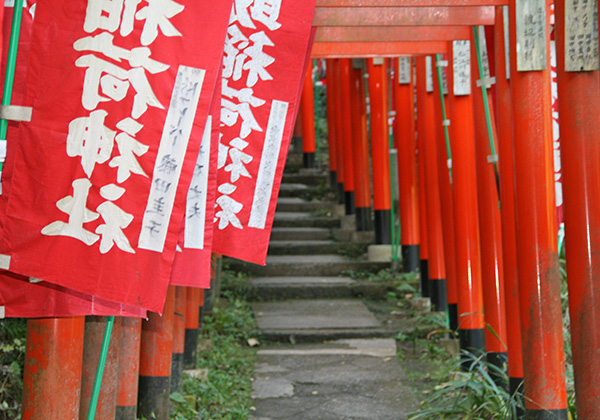Sasuke Inari Jinja
| Official Name | Sasuke Inari Jinja {Pronounced sah-soo-keh e-nah-re gin-jah} |
|---|---|
| Religious sect | Shinto |
| Founded | circa 1195 |
| Main object of worship | Mythological god of Uka-no-Mitama |
| Address | 22-10 Sasuke 2-chome, Kamakura, Kanagawa 248-0017 (show route from current location ) |
| Location | 900 meters northwest of Kamakura Station |
| Time needed to get there | 20 minutes |
| Admission | Free |
| Open | Year round |
| Phone number | 0467-22-4711 |
Historical Overview
Legend asserts, like that of Zeniarai Benten, that while Yoritomo Minamoto {yoh-re-toh-moh me-nah-moh-toh} (1147-1199), the founder of the Kamakura Shogunate, was in exile on the Izu {e-zoo} Peninsula, he fell sick one day. An old man with gray hairs appeared in his dream three nights in a row, and urged him to rise up against the Taira clan, the arch-rival military family who had all but exterminated the Minamoto clan except Yoritomo. As he was a young boy, Yoritomo was somehow pardoned to survive but was exiled instead. He asked the old man in the dream who he was, but the old man disappeared only saying, "I am the god of Inari {e-nah-re} dwelling in a hermitage near Kamakura." Yoritomo interpreted this was a divine message. With this revelation in the dream, he is said to have made up his mind to fight against the Taira and eventually gained a decisive victory.
After the victory over the Taira, Yoritomo ordered his men to look for the old man's hermitage. They found a tiny shrine which looked like the man's hermitage at the site the Shrine stands today. Yoritomo remodeled it to dedicate to the god of Inari and named it Sasuke. It literally means "helping Yoritomo" in Chinese characters.
After he died in 1199, the Shrine began to decline with no particular patrons. But, Priest Ryochu Nen-a {ryo-chew nen-ah} (1199-1288), the founder of Komyoji, restored it in the 13th century. Experiencing ups and downs for some time thereafter, the Shrine was taken over and supervised by Tsurugaoka Hachimangu Shrine in 1418. Since then, it had been under the control of Tsurugaoka Hachimangu. It was as recently as 1909 that the Shrine became independent.
Today, the Shrines consist of two separate structures: Haiden or the oratory in front and Honden or the sanctum in the back. Unlike the Buddhist temples, there is no statue or the like in both buildings.






